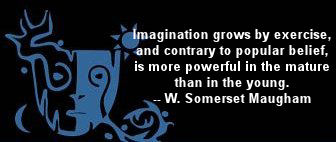|

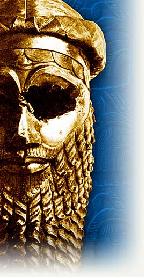 How Gilgamesh Became the Lord of the Dead How Gilgamesh Became the Lord of the Dead
Part One: Our Failure to Understand the Epic
by John David Ebert
With the dawning of the new millennium around 2000 B.C., the Sumerian world of contending city-states fighting over dwindling water resources gradually disappeared and was replaced by an age of empires and kingdoms fighting for possession over huge tracts of land. By the time the scribes of the First Dynasty of Babylon began to create their own version of the deeds of Gilgamesh, the Sumerian world was no more than a memory, and consequently, the older myths and legends surrounding the Sumerian Gilgamesh had to be taken up and reworked in such a way that it would make sense to the Babylonian mind, a mind quite different in its outlook upon the world from that of the Sumerians.
For the Gilgamesh Epic as we possess it today in the so-called Standard Babylonian Version dates from around 1200 B.C., although it is based upon and closely similar to its Old Babylonian prototype which dates from closer to the reign of Hammurabi (c. 1790 B.C.). We do not, however, possess a complete copy of this earlier version, but only bits and pieces, and so it is the later Standard Version composed by the Kassite scribe Sin-Leqi-Unninni upon which we have come to rely. Either way, the versions follow each other closely, and both are productions of the Babylonian mind.
But there are older texts than these, texts which date mostly from the time of the Third Dynasty of Ur (2112 — 2004 B.C.), which was the climactic development of Sumerian civilization. This was a mostly backward looking attempt at a restoration of the Sumerian culture which had been largely pushed aside by the Akkadians, a group of Semites who had taken over Mesopotamian society between 2333 — 2150 B.C. The Akkadians had created the first Universal State under their great ruler Sargon, welding together the individual city states into the first large empire to be ruled over by a single individual. Hitherto, each Sumerian city had been a state unto itself, each with a different ruler, a different patron god, etc., and all contending against each other for control over the irrigation canals that channeled the life-vivifying waters of the Tigris and Euphrates rivers.
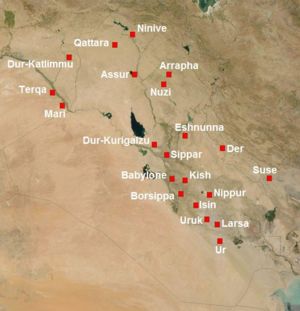 But when the Akkadian dynasty was overthrown by the Gutians, the Sumerians, beginning with King Gudea of Lagash (2144 — 2124 B.C.) began an attempt at a restoration of their culture by building temples and monuments which the Akkadian rulers had largely failed to do (and which the Sumerians regarded as one of the primary sacred duties of a ruler, lest he be accused of a dangerous and willful impiety to the gods, for the Sumerians regarded the Akkadians as impious and the fall of their Empire as a punishment from the gods for their hubris). The great king Ur-Nammu, the founder of the Third Dynasty of Ur, went on a building campaign comparable in its zeal to that of Rameses II in Egypt, for he built gigantic ziggurats at old Sumerian cities like Ur, Uruk, Larsa and Nippur, ziggurats which were so large that many of their ruins have survived to the present day. And along with this attempt at a restoration of Sumerian tradition (which was to last for only a brief flicker of a century, from 2112 — 2004 B.C.) came a fresh wave of Gilgamesh stories. For Utuhegal, the Sumerian king who had expelled the Gutians from the land, was king of Uruk — the city at which Gilgamesh was said to have ruled c. 2600 B.C. — and brother to Urnammu. Thus the kings of the Third Dynasty of Ur regarded themselves as the brothers of Gilgamesh, and saw him as a sort of protective genius of their short lived dynasty. But when the Akkadian dynasty was overthrown by the Gutians, the Sumerians, beginning with King Gudea of Lagash (2144 — 2124 B.C.) began an attempt at a restoration of their culture by building temples and monuments which the Akkadian rulers had largely failed to do (and which the Sumerians regarded as one of the primary sacred duties of a ruler, lest he be accused of a dangerous and willful impiety to the gods, for the Sumerians regarded the Akkadians as impious and the fall of their Empire as a punishment from the gods for their hubris). The great king Ur-Nammu, the founder of the Third Dynasty of Ur, went on a building campaign comparable in its zeal to that of Rameses II in Egypt, for he built gigantic ziggurats at old Sumerian cities like Ur, Uruk, Larsa and Nippur, ziggurats which were so large that many of their ruins have survived to the present day. And along with this attempt at a restoration of Sumerian tradition (which was to last for only a brief flicker of a century, from 2112 — 2004 B.C.) came a fresh wave of Gilgamesh stories. For Utuhegal, the Sumerian king who had expelled the Gutians from the land, was king of Uruk — the city at which Gilgamesh was said to have ruled c. 2600 B.C. — and brother to Urnammu. Thus the kings of the Third Dynasty of Ur regarded themselves as the brothers of Gilgamesh, and saw him as a sort of protective genius of their short lived dynasty.
Consequently, the six Gilgamesh stories which predate the Old Babylonian Version of the Epic stem largely from this period (although one or two of them may be older). But when one compares these older Sumerian legends with the Babylonian Epic, a crucial difference becomes apparent, for it seems never to have occurred to the Sumerians to connect all the legends together to form a single, coherent narrative. Each of the Sumerian tales is self-contained, just as we would expect of a largely oral tradition of story telling. In these episodes, we find Gilgamesh going to war against Akka of Kish in defiance of the advice of his Council of Elders; we see him dancing at a festival and having sex with a woman; we are treated to the pomp of his elaborate funeral, witnessing his burial beneath the Euphrates river; we find him cutting down the huluppu tree for Inanna and building her a throne and a bed from its wood. However, none of these stories follow from, or are connected to, any of the others. They are episodes only.
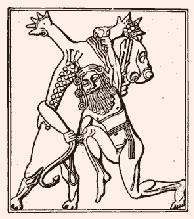 It was left to the literate genius of the Babylonians to forge a coherent narrative out of all these fragments. And the way in which they did this was to frame all of Gilgamesh's disparate adventures as a journey along the ecliptic, moving through the twelve signs of the zodiac. Thus, for the Babylonians, Gilgamesh was primarily a solar hero, and they were the first to envision a man's journey through the zodiac. Seeing him as a solar hero, moreover, had the effect of transforming Gilgamesh from a merely local, provincial hero of the twin cities of Ur and Uruk, to a universal hero of the Mesopotamian imagination. This is why we find the Epic existing in translations all over the ancient Near East amongst the Hittites, the Hurrians, the Canaanites, the Babylonians. Everyone seems to have identified with him as the world's first universal hero, just as Sargon of Akkad had been the first Universal King to rule over all of Mesopotamia. It was left to the literate genius of the Babylonians to forge a coherent narrative out of all these fragments. And the way in which they did this was to frame all of Gilgamesh's disparate adventures as a journey along the ecliptic, moving through the twelve signs of the zodiac. Thus, for the Babylonians, Gilgamesh was primarily a solar hero, and they were the first to envision a man's journey through the zodiac. Seeing him as a solar hero, moreover, had the effect of transforming Gilgamesh from a merely local, provincial hero of the twin cities of Ur and Uruk, to a universal hero of the Mesopotamian imagination. This is why we find the Epic existing in translations all over the ancient Near East amongst the Hittites, the Hurrians, the Canaanites, the Babylonians. Everyone seems to have identified with him as the world's first universal hero, just as Sargon of Akkad had been the first Universal King to rule over all of Mesopotamia.
Apparently, then, whatever the shortcomings of the Sumerian mentality had been, with their selfish, provincial interests impelling them towards fratricidal civil wars that tore their land to pieces, the Semites, beginning with the Akkadians and continuing on with the Babylonians, seem to have been more concerned with seeing the Land in terms of a universal whole, ruled over by one man, with one great universal hero as his prototype.
Toward this end, Gilgamesh was imagined as the man who traveled through the heavens and learned all the great secrets of time and eternity with one goal in mind: to become the Lord of the Dead and to rule over ershetu, the Mesopotamian Underworld. In this respect, he is the shadowy counterpart of the Great Emperor whose job it was to rule the upper world of the Land with a mighty fist, beginning with the reign of Hammurabi. One ruler above; one ruler below.
Consequently, it is no longer possible to see Gilgamesh's quest for immortality as a failure. It was not a failure, and I do not believe that the Babylonians ever thought that it was, for it had long since been common knowledge amongst both the Sumerians and the Babylonians that Gilgamesh was legendary for being the human mortal who became the Lord of the Dead. This is presupposed by the fact that Gilgamesh appears in this role in a number of key Sumerian texts, such as the "Death of Ur-Nammu," in which the great ruler journeys to the underworld and sees Gilgamesh there as one of the judges of the dead.
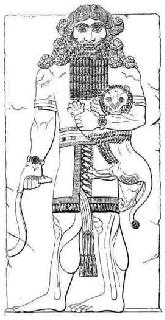 In the Sumerian story known as "The Death of Gilgamesh," we see the gods agonizing over their decision regarding what to do with Gilgamesh upon his death, for since, like Achilles, his mother was a goddess, the cow goddess Ninsun, he is partly divine as well as partly human. Therefore, they decide to make him one of the judges of the dead in the underworld. And though this funerary text was not included in the Epic as it was designed by the Babylonians, no Babylonian would have read the Epic without knowing this basic fact about him: namely, that he ended by becoming a god, and was, moreover, the only man ever to have done so. Utnapishtim, it is true, had been made immortal ruler over the island of Dilmun, a sort of localized Land of the Dead, but Utnapishtim was never worshipped as a god. There was never an Utnapishtim cult, as there had been for Gilgamesh all along. In the Sumerian story known as "The Death of Gilgamesh," we see the gods agonizing over their decision regarding what to do with Gilgamesh upon his death, for since, like Achilles, his mother was a goddess, the cow goddess Ninsun, he is partly divine as well as partly human. Therefore, they decide to make him one of the judges of the dead in the underworld. And though this funerary text was not included in the Epic as it was designed by the Babylonians, no Babylonian would have read the Epic without knowing this basic fact about him: namely, that he ended by becoming a god, and was, moreover, the only man ever to have done so. Utnapishtim, it is true, had been made immortal ruler over the island of Dilmun, a sort of localized Land of the Dead, but Utnapishtim was never worshipped as a god. There was never an Utnapishtim cult, as there had been for Gilgamesh all along.
Here, for instance, is Thorkild Jacobsen's description of the Gilgamesh cult as practiced by the Mesopotamians only a century or two after the death of the historical Gilgamesh:
-
-
Our first tangible indication [of Gilgamesh's cult] comes from account texts from Girsu of around 2400 B.C. They show that funerary offerings for successful dead priests and other figures credited with fertility powers were made at a sacred locality called 'The (River-) Bank of Gilgamesh.' Further evidence of Gilgamesh's prominence as a power in the netherworld comes in a composition of about 2100 B.C. dealing with the death of the first king of the Third Dynasty of Ur, Urnammu. Here Gilgamesh appears as a judge in the realm of the dead. He occurs again in that role much later, in magical texts of the first millennium, where he is appealed to for judgment against wayward ghosts and other evils. Lastly, copies of laments, which may have been composed in the first half of the second millennium, mention Gilgamesh as a form of the dying god Dumuzi side by side with the god Ningishzida. (Treasures of Darkness, p. 211)
We Westerners seem to have misconstrued the point of the Babylonian Epic. For the reason why Gilgamesh, upon his death — which occurs long after his journeys — was eligible to become the Lord of the Dead in the first place was precisely because of the fact of his having been the only mortal to have actually undertaken a journey along the ecliptic, a path normally reserved for Shamash, the sun god. Gilgamesh, then, the gods well knew, was the only human being who had seen a vision of the Fundament of things, and as a result contained a complete map in his mind of the layout of the heavens and the earth as the gods had designed it. He knew, because he had seen it with his own eyes. He, and he alone, had been initiated into the mysteries of the cosmos, and was therefore well suited for the honor of becoming Lord of the Dead. This is why the scribe Sin-Leqi-Unninni, in the Standard Version of the Epic, added a prologue not extant in the Old Babylonian version, in which the scribe emphasizes the mysteries into which Gilgamesh had been initiated: "He who experienced the whole gained complete wisdom. / He found out what was secret and uncovered what was hidden." (Stephanie Dalley trans., Myths From Mesopotamia, p. 50)
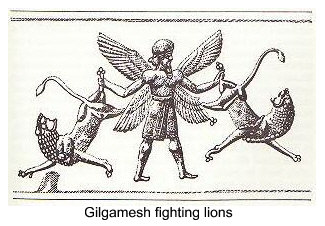
The whole point, then, of the Babylonian Epic of Gilgamesh, was that his journey through the zodiac (and that it is a journey through the zodiac I will demonstrate in future installments) was a preparation for his later becoming the Lord of the Dead and was meant as an explanation for why he alone, as a mortal, was suitable to play this role, while others were not.
Thus, our understanding of Gilgamesh as a story about a man who sought for immortality and failed because it is the plight of all men to die seems to have been wrong. Gilgamesh was precisely the one man in Mesopotamian mythology who succeeded in becoming a god, and therefore in attaining immortality.
And the fact that we are still talking about him today proves just how successful his quest really was.
John David Ebert is a former editor for the Joseph Campbell Foundation. He wrote footnotes for Baksheesh & Brahman, Sake & Satori and The Mythic Dimension, all posthumous publications of Campbell's writings. His first book was Twilight of the Clockwork God: Conversations on Science & Spirituality at the End of an Age (Council Oak Books, 1999). His most recent book is entitled Celluloid Heroes & Mechanical Dragons: Film as the Mythology of Electronic Society (Cybereditions, 2005), and was reviewed by Dr. William Doty in the August 2005 issue of Mythic Passages. His work has been published in various periodicals such as Utne Reader, The Antioch Review, Lapis and Alexandria. He is currently working on a book about popular culture and mythology, tentatively entitled Electric Demigods of the Lightspeed World.
Read more by John Ebert at his website cinemadiscourse.com
Return to Passages Menu
Subscribe to the Passages e-zine
|
